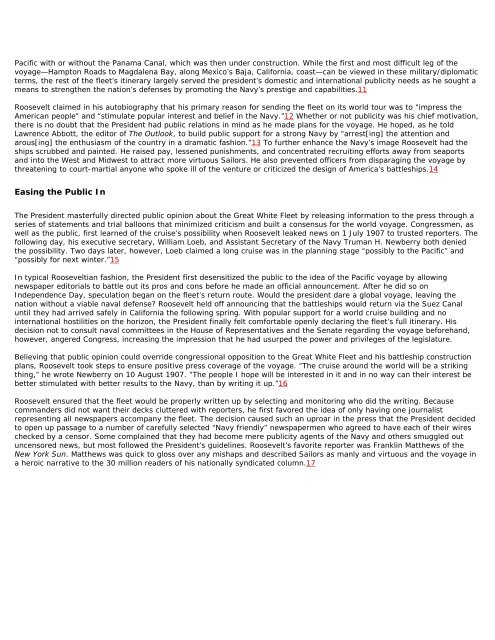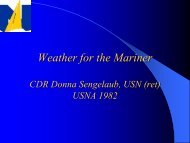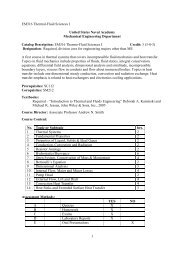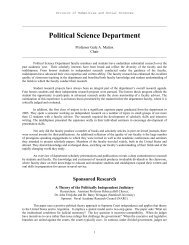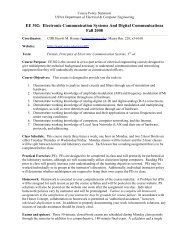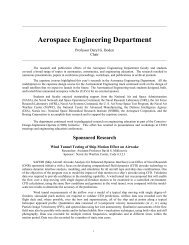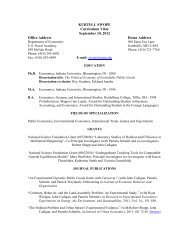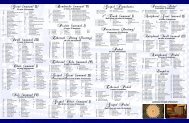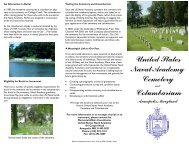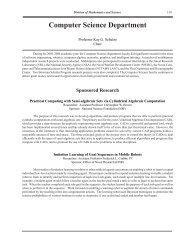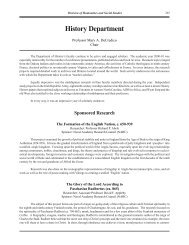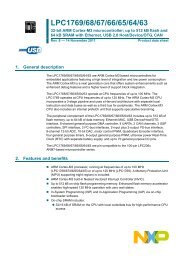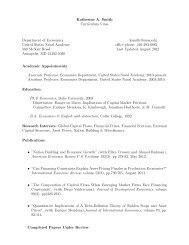Naval History Magazine - United States Naval Academy
Naval History Magazine - United States Naval Academy
Naval History Magazine - United States Naval Academy
You also want an ePaper? Increase the reach of your titles
YUMPU automatically turns print PDFs into web optimized ePapers that Google loves.
Pacific with or without the Panama Canal, which was then under construction. While the first and most difficult leg of thevoyage—Hampton Roads to Magdalena Bay, along Mexico’s Baja, California, coast—can be viewed in these military/diplomaticterms, the rest of the fleet’s itinerary largely served the president’s domestic and international publicity needs as he sought ameans to strengthen the nation’s defenses by promoting the Navy’s prestige and capabilities.11Roosevelt claimed in his autobiography that his primary reason for sending the fleet on its world tour was to “impress theAmerican people” and “stimulate popular interest and belief in the Navy.”12 Whether or not publicity was his chief motivation,there is no doubt that the President had public relations in mind as he made plans for the voyage. He hoped, as he toldLawrence Abbott, the editor of The Outlook, to build public support for a strong Navy by “arrest[ing] the attention andarous[ing] the enthusiasm of the country in a dramatic fashion.”13 To further enhance the Navy’s image Roosevelt had theships scrubbed and painted. He raised pay, lessened punishments, and concentrated recruiting efforts away from seaportsand into the West and Midwest to attract more virtuous Sailors. He also prevented officers from disparaging the voyage bythreatening to court-martial anyone who spoke ill of the venture or criticized the design of America’s battleships.14Easing the Public InThe President masterfully directed public opinion about the Great White Fleet by releasing information to the press through aseries of statements and trial balloons that minimized criticism and built a consensus for the world voyage. Congressmen, aswell as the public, first learned of the cruise’s possibility when Roosevelt leaked news on 1 July 1907 to trusted reporters. Thefollowing day, his executive secretary, William Loeb, and Assistant Secretary of the Navy Truman H. Newberry both deniedthe possibility. Two days later, however, Loeb claimed a long cruise was in the planning stage “possibly to the Pacific” and“possibly for next winter.”15In typical Rooseveltian fashion, the President first desensitized the public to the idea of the Pacific voyage by allowingnewspaper editorials to battle out its pros and cons before he made an official announcement. After he did so onIndependence Day, speculation began on the fleet’s return route. Would the president dare a global voyage, leaving thenation without a viable naval defense? Roosevelt held off announcing that the battleships would return via the Suez Canaluntil they had arrived safely in California the following spring. With popular support for a world cruise building and nointernational hostilities on the horizon, the President finally felt comfortable openly declaring the fleet’s full itinerary. Hisdecision not to consult naval committees in the House of Representatives and the Senate regarding the voyage beforehand,however, angered Congress, increasing the impression that he had usurped the power and privileges of the legislature.Believing that public opinion could override congressional opposition to the Great White Fleet and his battleship constructionplans, Roosevelt took steps to ensure positive press coverage of the voyage. “The cruise around the world will be a strikingthing,” he wrote Newberry on 10 August 1907. “The people I hope will be interested in it and in no way can their interest bebetter stimulated with better results to the Navy, than by writing it up.”16Roosevelt ensured that the fleet would be properly written up by selecting and monitoring who did the writing. Becausecommanders did not want their decks cluttered with reporters, he first favored the idea of only having one journalistrepresenting all newspapers accompany the fleet. The decision caused such an uproar in the press that the President decidedto open up passage to a number of carefully selected “Navy friendly” newspapermen who agreed to have each of their wireschecked by a censor. Some complained that they had become mere publicity agents of the Navy and others smuggled outuncensored news, but most followed the President’s guidelines. Roosevelt’s favorite reporter was Franklin Matthews of theNew York Sun. Matthews was quick to gloss over any mishaps and described Sailors as manly and virtuous and the voyage ina heroic narrative to the 30 million readers of his nationally syndicated column.17


